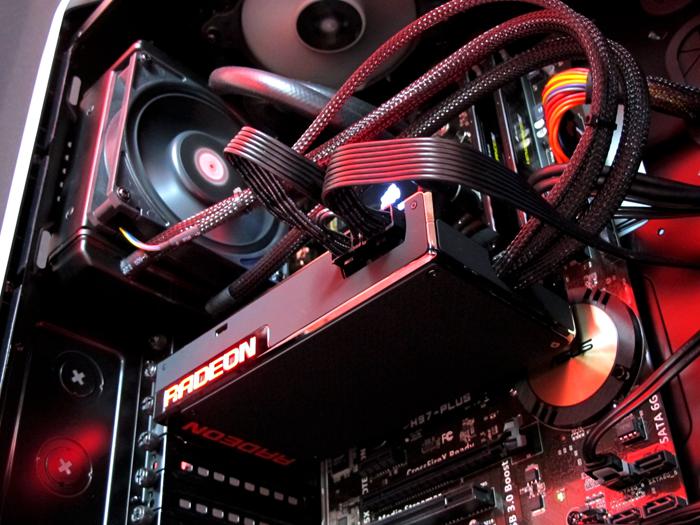The AMD Radeon R9 Fury X is a graphics card that was released in June 2015. It was the flagship model in AMD’s Fury series of graphics cards, and it was designed to compete directly with NVIDIA’s high-end cards, such as the GTX 980 Ti and the Titan X. The Fury X was built using the new High Bandwidth Memory (HBM) technology, which allowed for higher memory bandwidth and lowers power consumption compared to traditional GDDR5 memory.
In this article, we will take an in-depth look at the AMD Radeon, discussing its specifications, performance, and features, as well as its strengths and weaknesses.
Specifications of AMD Radeon R9 Fury X
The AMD Radeon R9 Fury X is based on the Fiji XT GPU, which features 4,096 stream processors, 256 texture units, and 64 ROPs. It also has a base clock speed of 1,050 MHz and a boost clock speed of 1,050 MHz. The Fury X comes with 4GB of HBM memory, which operates at a speed of 500 MHz, providing a total memory bandwidth of 512 GB/s.
The Fury X has a TDP of 275 watts and requires a 2x 8-pin power connector to run. It also features a closed-loop liquid cooling system, which keeps the card running at lower temperatures and allows for better overclocking performance.
Performance of AMD Radeon R9 Fury X
The AMD Radeon is a high-end graphics card that is capable of delivering excellent performance in a wide range of games and applications. In most benchmarks, it performs on par with or better than the NVIDIA GTX 980 Ti and Titan X, which were its main competitors at the time of its release.
The Fury X is particularly well-suited for gaming at 1440p or 4K resolutions, where it can deliver smooth framerates and high levels of detail. It also performs well in virtual reality applications, thanks to its high levels of processing power and memory bandwidth.
One area where the Fury X falls behind its competitors is power consumption. While it is more power-efficient than previous AMD cards, such as the R9 290X, it still consumes more power than the GTX 980 Ti and Titan X, which can limit its overclocking potential.
Features of AMD Radeon R9 Fury X
The AMD Radeon comes with a number of features that make it a compelling choice for high-end gamers and enthusiasts. One of the most notable features of the card is its use of HBM memory, which provides higher memory bandwidth and lower power consumption compared to traditional GDDR5 memory. The Fury X also features AMD’s FreeSync technology, which synchronizes the card’s refresh rate with a compatible monitor’s refresh rate, eliminating screen tearing and stuttering.
The Fury X also supports DirectX 12, which is a new graphics API that provides more efficient access to the card’s processing power and memory. It also supports AMD’s LiquidVR technology, which is designed to improve the performance and stability of virtual reality applications.
Strengths of AMD Radeon R9 Fury X
The AMD Radeon X has a number of strengths that make it a compelling choice for high-end gamers and enthusiasts. Its use of HBM memory provides higher memory bandwidth and lower power consumption compared to traditional GDDR5 memory, which allows for better performance and efficiency. The card also features a closed-loop liquid cooling system, which keeps the card running at lower temperatures and allows for better overclocking performance.
Another strength of the Fury X is its support for AMD’s FreeSync technology, which synchronizes the card’s refresh rate with a compatible monitor’s refresh rate, eliminating screen tearing


Comments are closed.